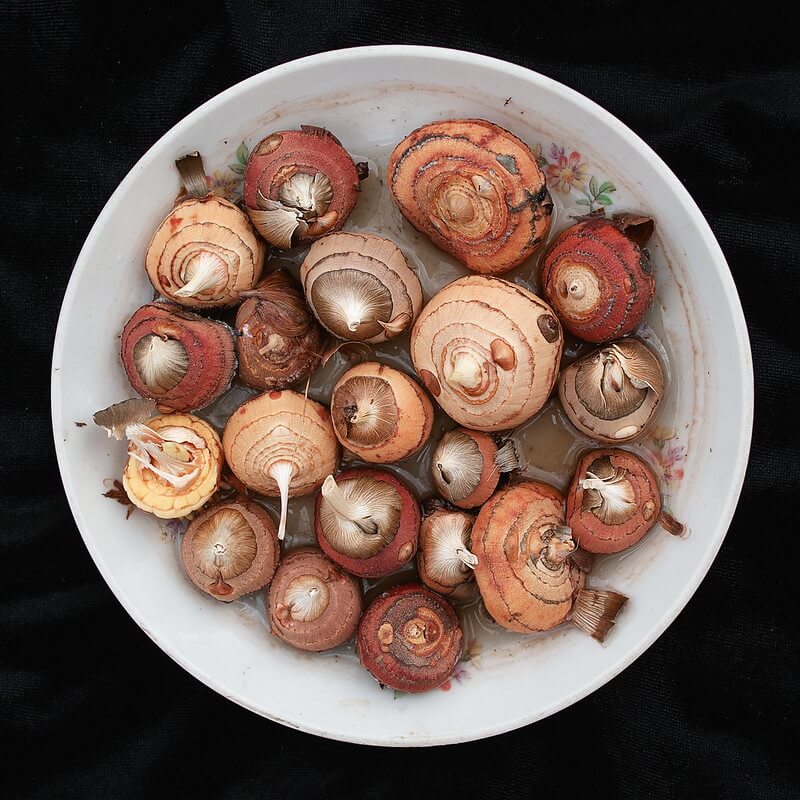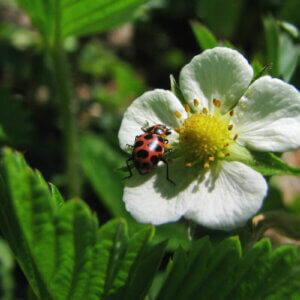I have fond memories of walking with my great-grandfather through his garden. In late August, the gladioli would be in full bloom and much taller than me. Of course, I was only a 6-year-old at the time.
With clippers in hand, Great-Grandpa would cut stalks full of blooms, and carefully lay them in my outstretched arms. Back at the house, Mabel, the housekeeper, would place them in a large vase of water and set it in the center of the dining room table. It was a grand display of white, pink, burgundy, and multicolored gladiolus blooms.
I wish I had my great-grandfather’s gladioli bulbs. He had the most beautiful display. Every summer, we’d stand by the tall stalks laden with bulbs, waiting to burst forth in glorious splendor.

I think my mother wanted to rescue some of the bulbs. But Great-Grandpa passed away in the middle of winter with the bulbs safely stored in the garden shed. His estate went to a stepson instead of his granddaughter (my mother), so the issue of the gladioli bulbs never came up. But the previous summer, Mom had divided some of Great-Grandpa’s rhubarb and transplanted it to her garden. It’s been passed down to my generation, and I still enjoy my great-grandfather’s rhubarb.
Related Post: Homestead Stories: Great Grandpa’s Rhubarb
My great-grandfather’s gladioli, however, are gone. My mother never did have success growing glads, and I have tried year after year to grow glads like Great-Grandpa’s. Mine suffered drought, wilted, and died. I tried with both recovered and newly purchased bulbs. Same result. Finally, this year, I have reaped the rewards of perseverance. I actually have a few that rival my memory of Great-Grandpa’s glads. Perhaps with time, I’ll have a large garden full of glads like he did.
I’m glad I didn’t give up. And, I believe I’ve learned a few things about glads in the process. Often dubbed the summer tulip, these glamorous flowers are supposedly, easy to grow. But, in spite of the shortened name of glads, I particularly find it interesting that the flower of gladiolus is an expression of strength in character, remembrance, faithfulness, and moral integrity.

It’s the symbolic flower for those born in August, and sometimes it’s called a sword lily because of the blade-like leaves. In fact, its name is derived from the Latin word gladius which means sword. When gladioli are given as a cut flower arrangement, it signifies infatuation, a symbolism that intensifies depending on the color of the flower.
Symbolism aside, these are late summer bloomers, and sadly, no sooner have I enjoyed my colorful display of white, burgundy, purple and multicolored glads than it’s time to dig up the bulbs and store them safely until next spring. After another long, dry summer, I have assessed my prime locations for planting the bulbs next year. I plan on having a grand patch of glads, hopefully as numerous and colorful as my great-grandfather’s.
Where to Grow Glads
So, what are the prime locations? In spite of glads preferring full sun, I do have a few locations that, in times of intense drought and extreme heat, literally burn anything I try to grow — even glads. Not a good location. So, I’ve chosen a few sunny spots that also boast a bit of shade to limit the intensity of a hot, dry summer. The soil in these areas is moderately fertile, loose, and well drained.
Apparently, they don’t do well in heavy, soggy soil which explains why some of the areas I tried growing glads were as unproductive as the extreme sunny areas. When spring comes, before I plant the bulbs, I’ll loosen the soil, add some compost, plant the bulbs, and circle the area with plastic forks to discourage the squirrels and chipmunks from digging up the bulbs.
Interestingly enough, I’ve discovered that while these nuisance critters will dig up the glad bulbs, they don’t seem to eat them as they do tulip and daffodil bulbs. I’ve found glad bulbs scattered in the garden, dug up and uneaten.

But that’s next spring. Right now, I’m enjoying the blooms on these tall, spiked stems. Although glads range in size, mine are about 2 feet in height which is on the small size compared to larger ones that grow to 5 feet. My glads may not be the tallest variety, but once loaded with flowers, they are top heavy and I have to stake the stalks to prevent them from toppling over, or worse, breaking the stalk which will cause the flowers to wither and die.
Glads can be miniature flowers or giant in size. Mine fit somewhere in the middle. And even though these gorgeous flowers make for great cut flower bouquets, I prefer to leave them where they grow, and enjoy the beauty in the garden.
Storing Gladiolus Bulbs
Once the flowers are done, I’ll have to dig up the bulbs and store them in a cool, dry area for the winter months. Otherwise, the extreme temperatures in my growing area will kill the bulbs. I had that happen several times before I learned that I had to dig them up.

After digging the bulbs, I’ll allow them to dry in the shed for a few days and then put them in paper bags (like I do my dahlia bulbs) and store them in the cold cellar for the winter. If I lived in a warmer climate, I could consider leaving the bulbs in the ground over winter, as long as I cover the area with a layer of hay or straw.
Common Pests and Diseases
Like most plants, gladioli have their pests and diseases. Other than the previously mentioned squirrels and chipmunks who enjoy digging up the bulbs, glads are susceptible to spider mites and aphids. These pests can be treated as one would treat the infliction on any other plant. Use insecticidal soap and spray the plants in the early evening when it’s cool.
Like any other bulb plant, glads can suffer from rot in the bulb itself: Gladiolus corm rot (fusarium wilt). The corms (bulbs) if infected will have dark brown, almost circular rotted areas on the side or top. This can happen in storage or from fungus in the soil which I believe, is what has happened to some of my bulbs over the summer.

How do I know this? Well, most of the leaves of the glads in this particular growing area have turned yellow. I’ll know for sure when I dig up the bulbs. There is no complete cure; preventative measures are the best approach to avoid this rot. Fertilize only sparingly, especially if you’re using nitrogen or manure.
Related Post: How To Get Rid Of Pests In Your Vegetable Garden
If the corms look infected, don’t plant them as the infection can spread. Only plant the healthy. Discard the infected ones. To prevent this infection during the winter months of dry storage, make sure to harvest the corms when the weather is dry (if possible) and clean and dry them rapidly at a warm temperature before putting them in storage for the winter.
Gladiolus Varieties
Some varieties of gladioli, some easier to grow than others. Mine include the deep pink flowers known as Candyman and the white flowers with splashes of pink on the petals, known as Prins Claus.
There’s also Dream’s End which is tall (up to 3 feet) and sports a lovely light orange flower with large yellow centers, the Black Star with its deep purple-red blooms, and the Glamini glads, which I must get as they are supposed to be pest resistant and they will bloom well in full sun or partial shade.
I think I’ll start with these and see if I can create a delightful glad garden to rival my great-grandfather’s. At the very least, I hope to do him proud.










































Leave a Reply